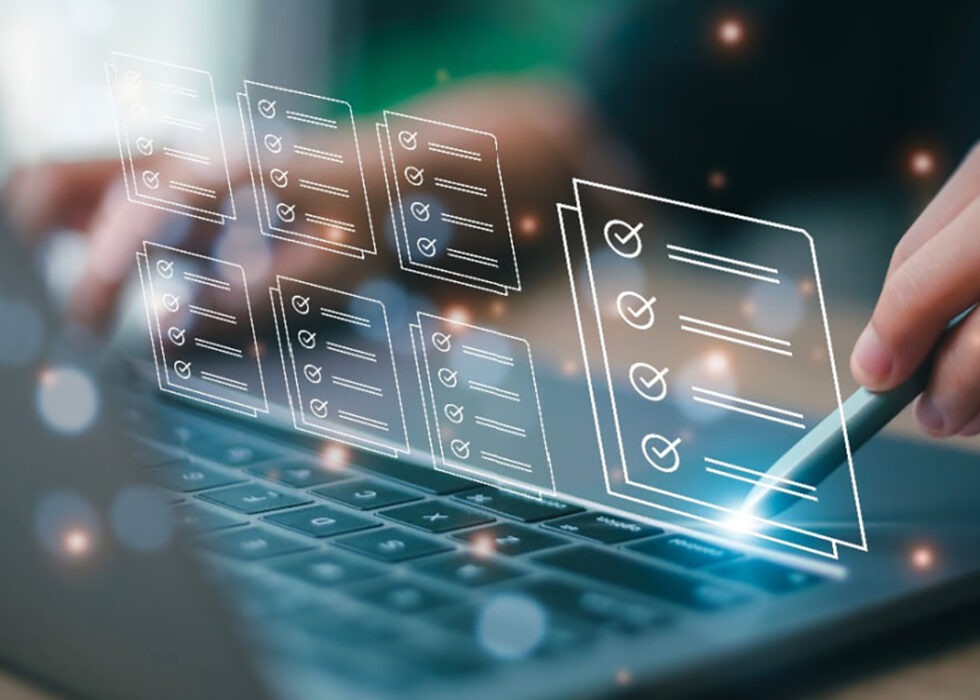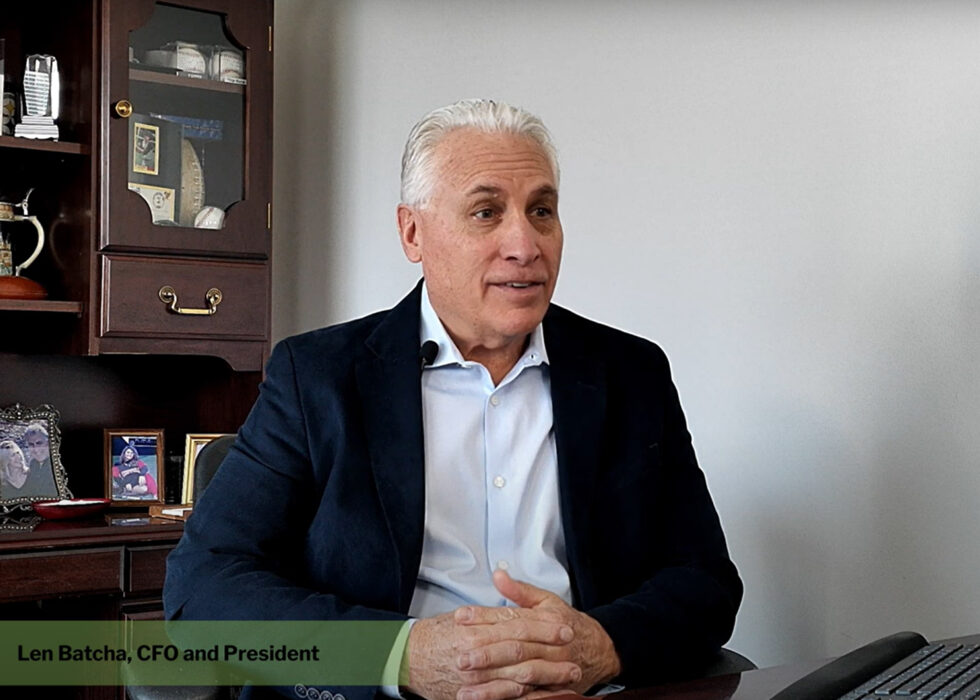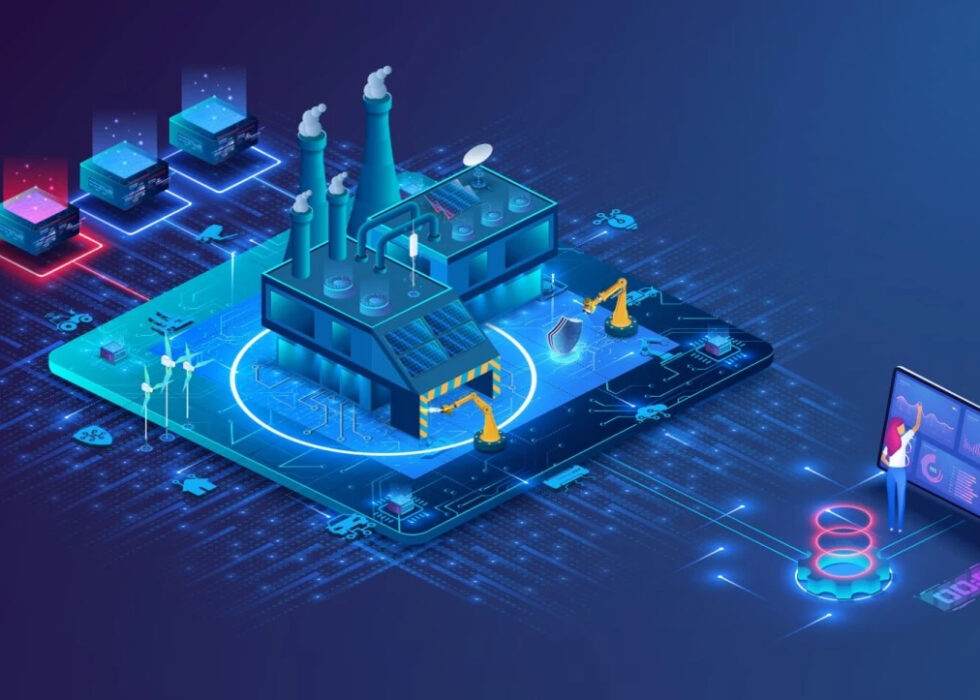2026 Logistics Trends: AI-Powered Supply Chains Transform the Road Ahead
The logistics industry is entering a new era—one driven by intelligent automation, proactive planning, and seamless data connectivity. Not surprisingly, in 2026, AI will continue to take a commanding role in how goods move, how networks adapt, and how companies deliver resilient customer experiences.
At TechTrans, I’m seeing this shift daily. It’s a transformation that makes transportation faster, leaner, and more reliable. Here’s more on what we can expect this coming year.
Smarter Decisions — Before You Even Ask
The logistics industry has collected years of data: inventory levels, delivery times, traffic patterns, seasonal demand spikes, and much more. That foundation ultimately lets AI make real decisions, not just suggestions. With good initial routing and demand forecasting baked in, much of what use to trigger delays is less of a problem.
For industry, the use of AI is not about replacing people; it’s about using data so we don’t need to scramble and manage chaos. Rerouting mid-weekend because of traffic disruptions? That becomes rare. Instead, shipments follow optimized paths up front, and inventory sits where it’s most likely to be needed next. The result? Less wasted time, fewer miles traveled, and better service — for shippers and customers alike.
Planning Ahead — With Insight, Not Guesswork
Today’s analytics don’t just report what happened — they help predict what’s coming. By blending weather data, traffic trends, purchase behavior, and more, dispatch decisions can anticipate delays before they arise. The same kind of navigation tools you use on your phone to dodge rush-hour jams. That’s the model for modern logistics.
That means more accurate ETAs, smarter allocations, and less “surprise — your order’s late.” It’s about giving customers and carriers peace of mind. And in a world where “on time” can make or break a business, that’s priceless.
Warehouses Are Getting a Makeover
If you walked into many warehouses today, you’d see robots, automated vehicles, streamlined packing zones — a far cry from the frenetic manual labor shops of the past. These are spaces built for volume, speed, and precision.
But this isn’t a robotics takeover. It’s smarter assignment of human effort. We’re letting machines handle repetitive lifting and moving while empowering people to oversee, optimize, and solve problems. In other words: humans plus automation equals strength — not replacement.
Experiment First — Risk Never
Rearranging an entire distribution network is no small thing. Thanks to digital twin technology, we can build virtual replicas of warehouses, distribution centers, even entire supply chain maps. We run simulations there first — look for bottlenecks, shifts in demand, potential returns — and only after thorough testing do we commit any real-world changes.
That’s foresight. It saves money, avoids headaches, and ensures we’re deploying resources where they make sense.
Visibility = Trust + Speed
Customers today don’t just want delivery. They want information. Where is their order? When will it arrive? Has it shipped? Did it get unloaded? Real-time visibility powered by IoT sensors and AI transforms that wish into reality — for both the customer and the carrier.
And the data collected along the way? It’s not lost after delivery. It feeds the intelligence engine that powers better routes, smarter scheduling, and fluid inventory flows. Transparency is no longer a “nice to have.” It’s part of what makes a modern logistics partner reliable.
Everyday Intelligence: Not Just Automation, But Understanding
Generative AI is helping us in ways we didn’t expect two years ago. It creates useful reports, helps visualize warehouse layouts, even drafts customer communications or packaging layouts depending on volume. It’s like having a smart assistant that works with you — not instead of you.
You don’t need to staff up just because demand spikes. Instead, you get tools that adapt in real time, giving your team flexibility and control without endless overtime.
A Smarter Supply Chain for a Smarter World
I think in 2026, we’ll see a broader shift toward logistics that:
- Aligns technology and people to deliver better outcomes
- Reduces wasted miles and streamlines inventory placements
- Uses real-time information as a foundation for customer trust
- Build flexibility into every decision
- Grows stronger as conditions change
At TechTrans, we’re committed to helping organizations move specialized goods — and move confidently — through every mile of the journey. If smarter, more efficient logistics are part of your priority list this year, we’re ready to partner with you.
Contact us today and let us know how we can move forward together.
Going Beyond the Rules: Building a Culture of Compliance in Logistics
Most logistics companies claim to “follow the rules” when it comes to regulations and compliance. At TechTrans, we’ve built an entire culture around going beyond them. Compliance isn’t just a requirement — it’s a mindset, one that shapes how we serve our clients, train our people, and continuously improve our processes.
The Value of Voluntary Compliance
Achieving ISO 9001 certification put TechTrans in rare company among freight forwarders. Few in our industry have taken that step — but for us, it was a natural extension of who we are. ISO 9001 certification demonstrates that our quality management system is structured, documented, and continuously showing improvement.
This foundation enhances the opportunity for TechTrans to become an approved vendor for clients who operate in highly regulated sectors such as healthcare, technology, and federal logistics. More importantly, it builds trust. Our clients know that our commitment to compliance isn’t reactive — it’s embedded in how we operate every day.
When an issue arises, our ISO 9001-based corrective action process ensures it’s reported, resolved, and prevented from recurring. This cycle of accountability strengthens both our internal operations and our customers’ confidence in our services.
From a Quality Plan to a Quality Culture
Our compliance journey began decades ago with a simple but intentional step — the creation of a Quality Plan and Quality System within our Operations Manual. We started small, with a part-time Quality Manager measuring outcomes and establishing a performance baseline. That data became the compass for everything that followed.
Once we understood what our baseline was, we set goals for improvement and used metrics to pinpoint where attention was needed. We quickly learned that success in logistics compliance depends on one thing above all else: communication.
By collaborating directly with our customers, we defined key performance indicators (KPIs) and developed operational processes aligned with their expectations. These processes were built with customer input — and, just as importantly, customer buy-in.
Training for Consistency and Confidence
True compliance depends on people, not paperwork. To make our quality system sustainable, TechTrans launched a Learning Management System (LMS) to train and certify employees and Technical Service Providers (TSPs). This ensured that every team member understood not just how to follow a process, but why it mattered.
As our quality initiatives grew, we expanded our Quality Department to perform internal audits, manage external customer audits, and lead continuous improvement efforts. Today, that department is both the guardian of our standards and the face of our organization when it comes to customer trust and regulatory assurance.
Compliance is Everyone’s Job
At TechTrans, compliance isn’t confined to a single team. Operations, Information Systems, Sales, and Accounting all work as extensions of our Quality Department. This cross-functional approach means that quality isn’t something we check — it’s something we live.
Through this collaboration, TechTrans has evolved into a quality-first logistics company, where compliance and performance go hand in hand. For our clients, that translates into effective onboarding, fewer anomalies, and confidence that their logistics partner meets — and often exceeds — industry expectations.
Quality as a Journey
As Len Batcha, CFO and President of TechTrans, often reminds us:
“Our motto for the organization is that quality is a journey, not a destination.”
That journey continues. By treating compliance as a shared responsibility and a source of pride, TechTrans continues to raise the bar for freight forwarding quality management. We don’t just follow the rules — we build systems that make them second nature.
2025 Trends in the Logistics Industry
The logistics and supply chain industry is set to experience dynamic growth in 2025, driven by global investments and efforts to enhance resilience and sustainability. Key highlights include:
Global Economic Boost:
- Increased investments in U.S. manufacturing by global players will spark a surge in activity, especially in industrial sectors.
- Expansion of ocean freight capacity and upgrades to port infrastructure are critical priorities, especially following the impact of last year’s Longshoreman strike.
Industry Imports and Exports:
- Growth in inbound imports will support domestic manufacturing.
- Accelerated development of U.S.-based chip manufacturing plants will reduce dependency on foreign suppliers and diversify the global chip supply chain.
- An increase in agricultural exports, balanced by imports of foreign goods, is anticipated, influenced by tariff threats.
Vertical Market Growth:
- Strong activity in medical equipment manufacturing will continue, driven by technological innovation.
- Integration of AI across industries will enhance efficiency and customer-vendor relationships.
- A stronger focus on quality compliance will emerge as a key differentiator.
Environmental Sustainability:
- Efforts to reduce emissions and develop solar and nuclear energy sources will remain a priority.
- Economic viability and long-term strategies will guide environmental initiatives without imposing strict mandates.
For Technical Transportation in 2025, the company expects to see additional growth in the medical equipment and cash automation markets, while the opportunity to explore new verticals will increase. In addition, the company year will focus on continued improvements in internal processes to drive efficiency, quality and growth.
The company also expects to receive its ISO certification by February, which will reinforce TechTrans’ commitment to quality while expanding opportunities with both existing and new customers.
These trends highlight an optimistic and transformative year for the logistics industry, characterized by innovation, sustainability, and growth across key sectors.
Exploring the Digital Twins Concept in the Supply Chain
The use of technology within the supply chain only continues to grow and become increasingly integrated in day-to-day operations. Those wanting to stay ahead of the curve need to consider some of the outlying technologies that are gaining traction. One such technology is the concept of Digital Twins. This innovative approach hopes to bring unprecedented levels of efficiency, visibility and control to traditional supply chain and logistics operations.
So exactly what are Digital Twins? Essentially, a Digital Twin is a virtual replica of a physical object, process or system. In the context of supply chain and logistics, Digital Twins replicate entire supply chain networks, including warehouses, distribution centers, transportation fleets and even individual products. These virtual models are created using real-time data from sensors, IoT devices (such as activity trackers, connected instruments in vehicles or asset and inventory tracking) and other sources, allowing for accurate simulations and analysis of various scenarios.
In today’s competitive business environment, optimizing supply chain and logistics operations is essential for staying ahead. Digital Twins offer a solution to achieve this goal, providing businesses with a simulated copy of their supply chain network.
Some benefits for supply chain providers include:
- Enhanced Visibility—Offers real-time insights into the status and performance of every component of your supply chain, from warehouses to transportation fleets.
- Optimization through Simulation—Can run simulations based on real-time data to identify bottlenecks, inefficiencies and risks within your supply chain processes. Testing different strategies and scenarios virtually can optimize routes and resource allocation.
- Predictive Maintenance—Monitors equipment and assets in real-time to anticipate maintenance needs before they lead to downtime or disruptions. Also helps implement predictive maintenance schedules based on data collected from sensors and IoT devices.
- Proactive Risk Management—Continuously monitors factors such as weather patterns, geopolitical events and supplier performance to identify potential risks and disruptions before they occur. Can implement contingency plans and mitigation strategies in advance.
- Improved Collaboration and Communication—Fosters greater transparency and coordination among stakeholders by providing access to real-time data and insights. Enhances efficiency, responsiveness and customer satisfaction across the supply chain ecosystem.
- Driving Innovation and Product Development—Leverages insights from virtual simulations and analysis to identify opportunities for optimization, automation and improvement within your processes. Can aid in developing new products, services and business models tailored to market demands.
As this concept matures, Digital Twins have the potential to bring unprecedented levels of visibility, efficiency and control to the supply chain and logistics industry. By creating virtual replicas of entire supply chain networks and leveraging real-time data and simulations, companies can optimize their operations, enhance risk management and drive innovation.
Though the technology is still in its earlier stages, indications show it may quickly become a key tool for businesses looking to remain competitive in today’s dynamic marketplace.
Navigating the Supply Chain in 2024: Trends and Adaptations
As 2024 continues to unfold, the echoes of a strong 2023 finish still reverberate in some sectors of the supply chain, shaping trends for the year ahead. In this blog, we’ll discuss some of those trends and what will impact the industry in 2024.
Healthy Healthcare Sector
The healthcare and medical field showed resilience as it marked phenomenal growth during the last quarter of 2023. This momentum is expected to carry forward into 2024, propelled by the strengthening of hospital groups and the emergence of new healthcare facilities.
Mergers within the medical sector will further strengthen key players, while investments in smart technology drive the replacement of obsolete equipment in life sciences, promising greater efficiency and reliability.
Building Quality Assurance
Quality Assurance (QA) remains a key focus in logistics, with companies placing a premium on stringent processes. During the past couple of years, TechTrans has underscored a commitment to excellence, and we continue to grow a dedicated QA organization with our own internal talent.
This commitment to QA, combined with enhanced data analytics, helps us better track and trace trends that provide invaluable insights for informed decision-making and improved client services. We believe this commitment to QA will continue to enhance our growth in 2024 to be considered ”Best in Class” among supply chain providers.
Life Sciences Growing Organically
In the realm of life sciences specifically, advancements in automation are reshaping processes, from inventory management to prescription dispensing. The integration of self-enclosed, self-dispensing machines brings forth a new era of efficiency and accuracy, reducing reliance on human intervention and mitigating potential errors.
This trend towards automation presents opportunities for logistics companies to establish a larger presence in the market, capitalizing on the demand for streamlined supply chain solutions.
Geopolitical and Economic Mess Ahead?
Despite global uncertainties, including geopolitical tensions and fluctuating oil prices, the supply chain remains resilient. Tariffs have yet to significantly disrupt operations, while developments in chip manufacturing plants, particularly in regions like Texas, offer new avenues for growth. In addition, unemployment remains low, however, the specter of inflation looms large and poses challenges for cost management and pricing strategies in the months ahead.
Automotive Crossroads
The automotive industry finds itself at a crossroads as it grapples with the transition to electric vehicles (EVs) amidst infrastructure challenges. While the EV market continues to expand, consumer adoption remains tempered by concerns over technology readiness and charging infrastructure. Meanwhile, geopolitical tensions in regions such as Ukraine and Gaza exert pressure on oil prices, influencing consumer behavior and spending patterns.
Consumer Caution Signs
In the face of economic uncertainty, consumers are exercising caution, prioritizing essential purchases and reevaluating spending habits. The rising costs of utilities and fuel are prompting individuals to adopt more conservative approaches, with travel and ancillary spending experiencing a downturn.
Concurrently, demographic shifts are reshaping the workforce landscape, with advancements in healthcare enabling individuals to work longer, fostering a more sustainable and inclusive workforce.
As we navigate the complexities of the supply chain in 2024, adaptability and innovation will be important. From embracing automation to leveraging data analytics, logistics organizations must remain agile in the face of evolving market dynamics. By staying attuned to emerging trends and harnessing technological advancements, businesses can position themselves for success in this ever-changing landscape.






